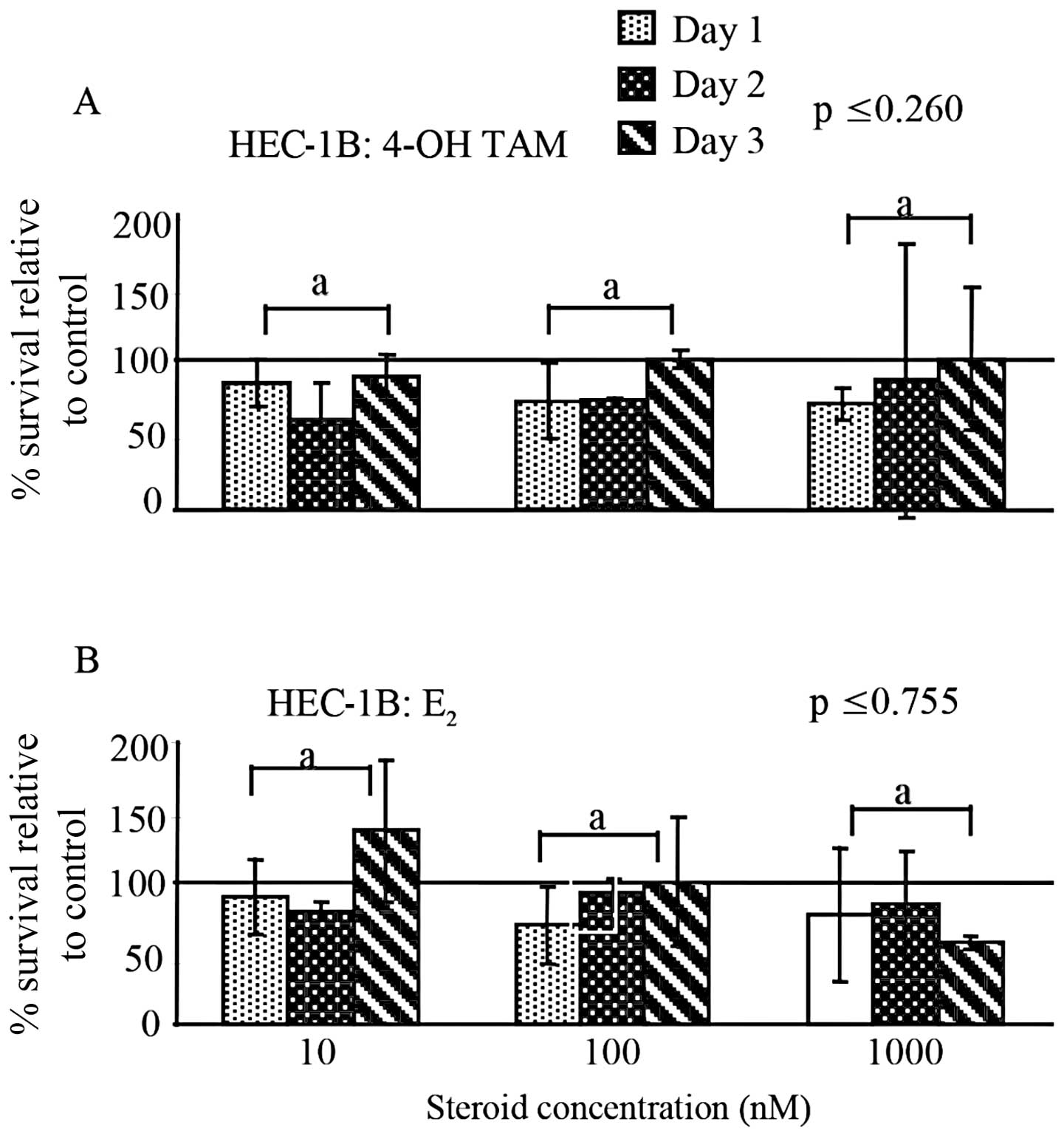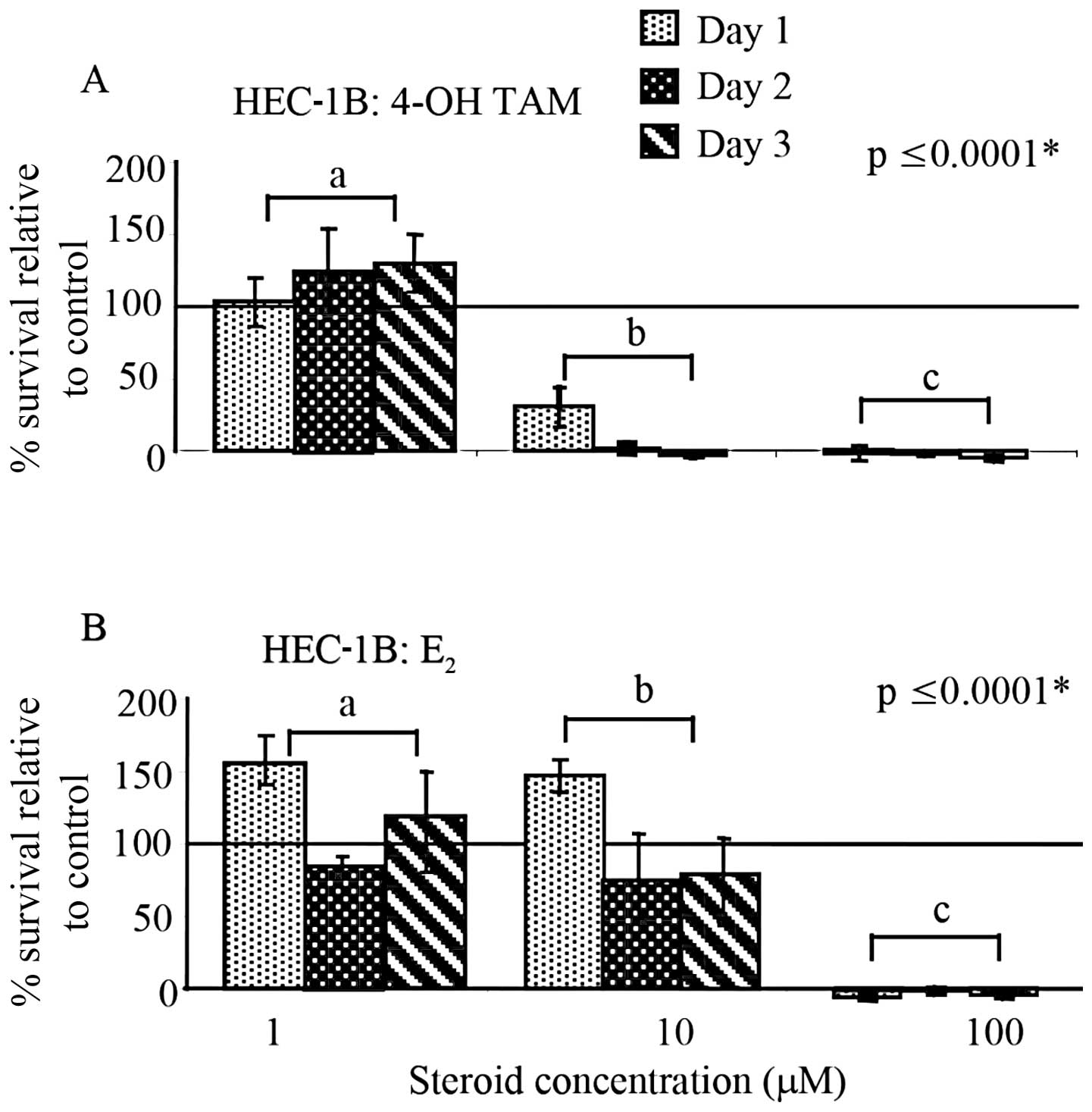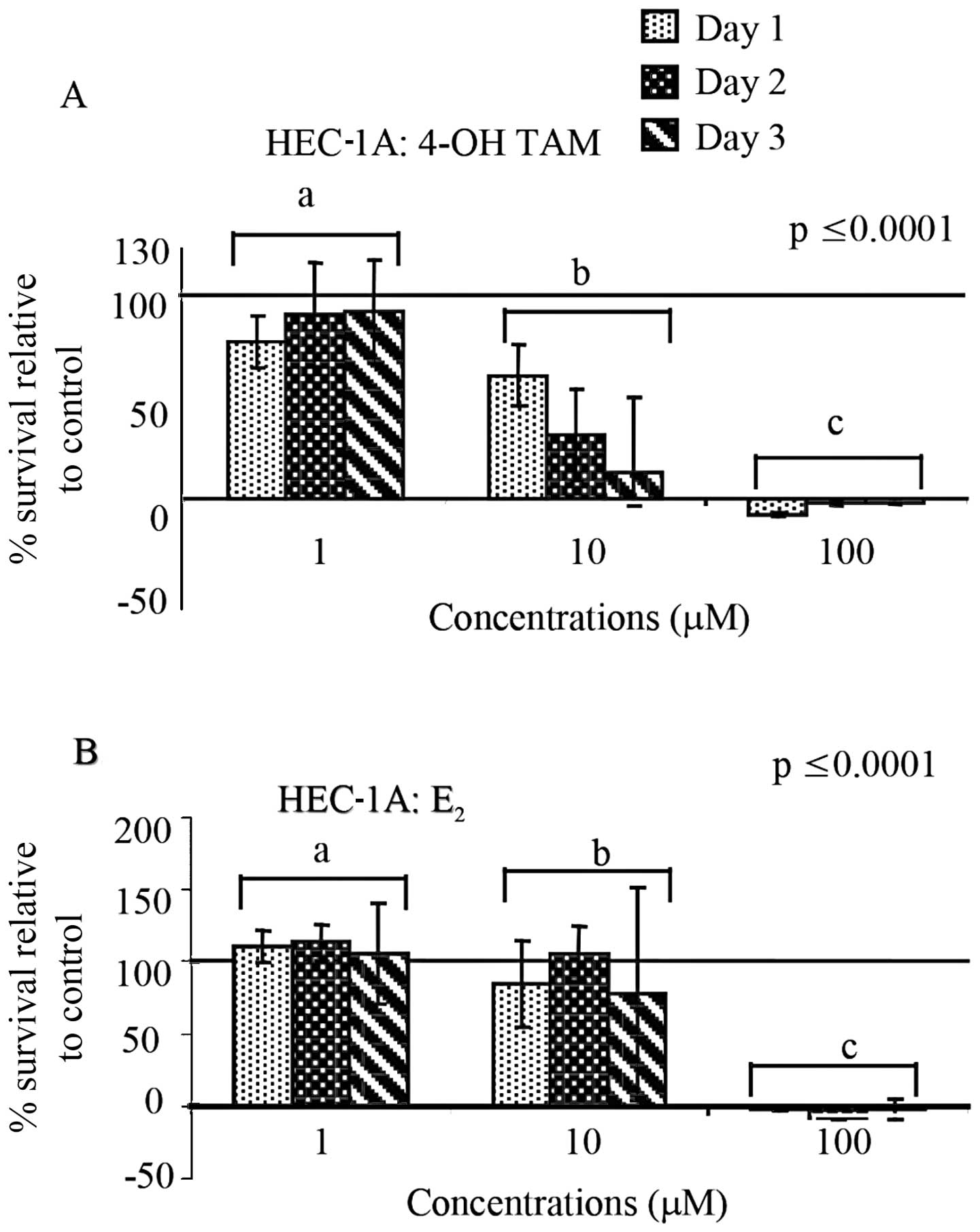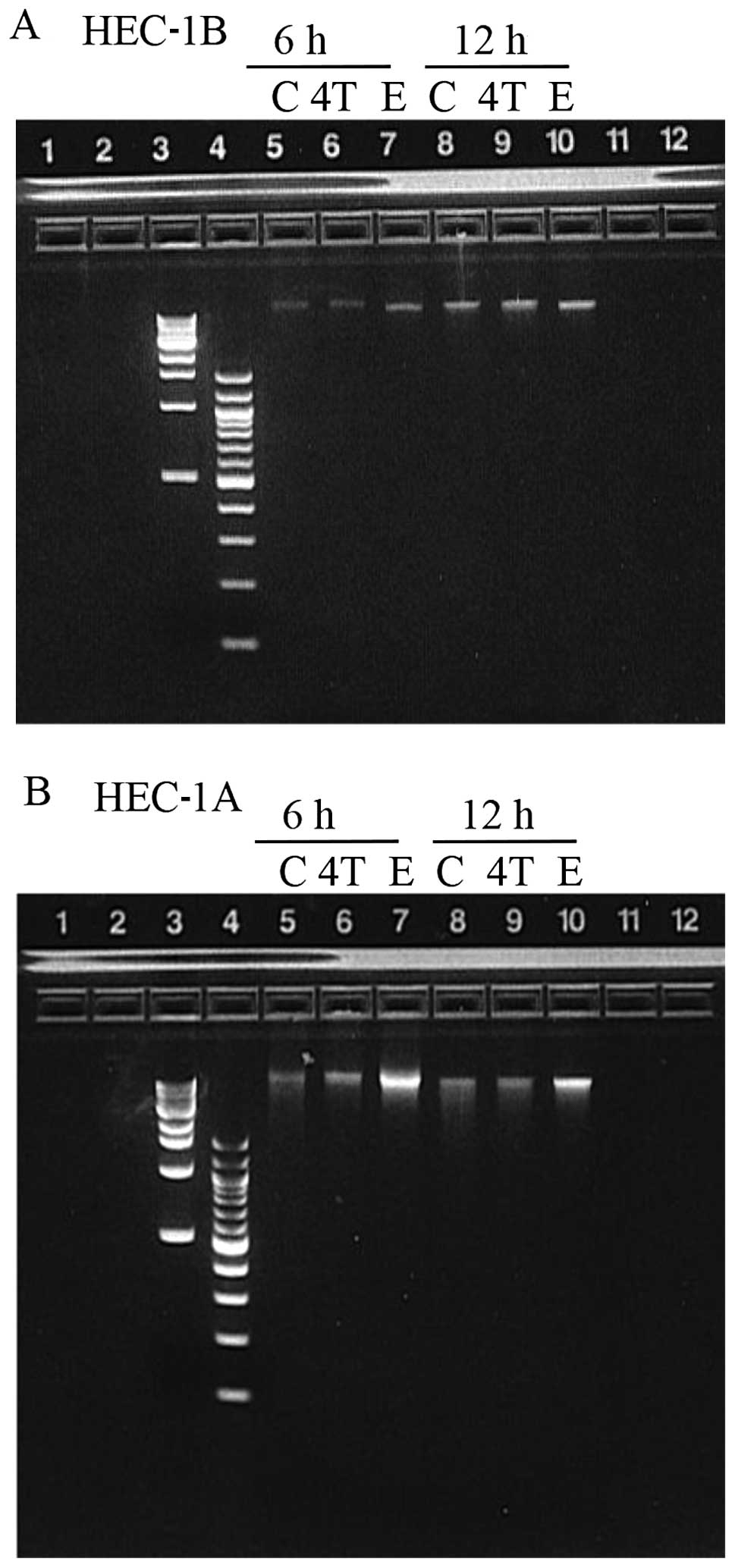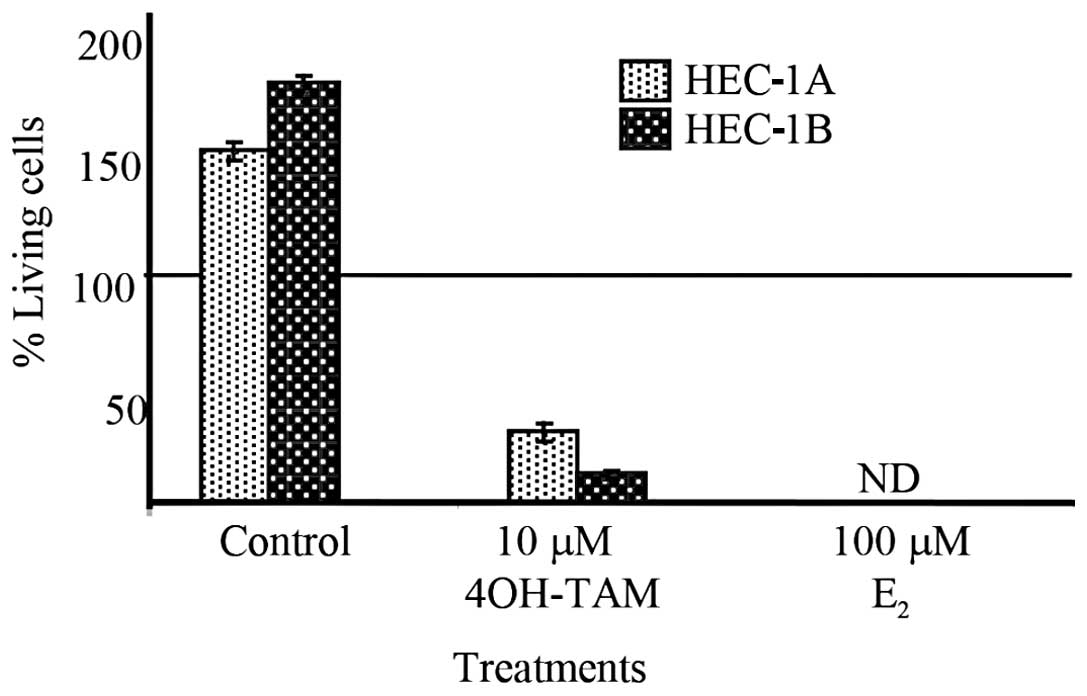|
1
|
Liu X, Pisha E, Tonetti DA, Yao D, Li Y,
Yao J, Burdette JE and Bolton JL: Antiestrogenic and DNA damaging
effects induced by tamoxifen and toremifene metabolites. Chem Res
Toxicol. 16:832–837. 2003. View Article : Google Scholar : PubMed/NCBI
|
|
2
|
Landel CC, Kushner PJ and Greene GL: The
interaction of human estrogen receptor with DNA is modulated by
receptor-associated proteins. Mol Endocrinol. 8:1407–1419.
1994.PubMed/NCBI
|
|
3
|
Stygar DN, Muravitskaya B, Eriksson H and
Sahlin L: Effects of SERM (selective estrogen receptor modulator)
treatment on growth and proliferation in the rat uterus. Reprod
Biol Endocrinol. 1:40–52. 2003. View Article : Google Scholar : PubMed/NCBI
|
|
4
|
Castro-Rivera E and Safe S:
17beta-Estradiol- and 4-hydroxy-tamoxifen-induced transactivation
in breast, endometrial and liver cancer cells is dependent on
ER-subtype, cell and promoter context. J Steroid Biochem Mol Biol.
84:23–31. 2003. View Article : Google Scholar : PubMed/NCBI
|
|
5
|
Stackievicz R, Drucker L, Radnay J, Beyth
Y, Yarkoni S and Cohen I: Tamoxifen modulates apoptotic pathways in
primary endometrial cell cultures. Clin Cancer Res. 7:415–420.
2001.PubMed/NCBI
|
|
6
|
Goldenberg GJ and Froses EK: Drug and
hormone sensitivity of estrogen receptor positive and negative
human breast cancer cells in vitro. Cancer Res. 42:5147–5151.
1982.PubMed/NCBI
|
|
7
|
Taylor CM, Blanchard B and Zava DT:
Estrogen receptor mediated and cytotoxic effects of the
antiestrogens tamoxifen and 4-hydroxytamoxifen. Cancer Res.
44:1409–1414. 1984.PubMed/NCBI
|
|
8
|
Reddel RR, Murphy LC, Hall RE and
Sutherland RL: Differential sensitivity of human breast cancer cell
lines to the growth-inhibitory effects of tamoxifen. Cancer Res.
45:1525–1531. 1985.PubMed/NCBI
|
|
9
|
Lyman SD and Jordan VC: Metabolism of
tamoxifen and its uterotrophic activity. Biochem Pharmacol.
34:2787–2794. 1985. View Article : Google Scholar : PubMed/NCBI
|
|
10
|
Pathak DN, Pongracz K and Bodell WJ:
Microsomal and peroxidase activation of 4-hydroxy-tamoxifen to form
DNA adducts: comparison with DNA adducts formed in Sprague-Dawley
rats treated with tamoxifen. Carcinogensis. 16:11–15. 1995.
View Article : Google Scholar
|
|
11
|
Kim SY, Suzuki N, Laxmi YR and Shibutani
S: Inefficient repair of tamoxifen-DNA adducts in rats and mice.
Drug Metab Dispos. 34:311–317. 2006. View Article : Google Scholar
|
|
12
|
Shibutani S, Ravindernath A, Suzuki N,
Terashima I, Sugarman SM, Grollman AP and Pearl ML: Identification
of tamoxifen-DNA adducts in the endometrium of women treated with
tamoxifen. Carcinogenesis. 21:1461–1467. 2000. View Article : Google Scholar : PubMed/NCBI
|
|
13
|
Castro-Rivera E and Safe S: Estrogen- and
antiestrogen-responsiveness of HEC-1A endometrial adenocarcinoma
cells in culture. J Steroid Biochem Mol Biol. 64:287–295. 1998.
View Article : Google Scholar : PubMed/NCBI
|
|
14
|
Perry RR, Kang Y and Greaves B: Effects of
tamoxifen on growth and apoptosis of estrogen-dependent and
-independent human breast cancer cells. Ann Surg Oncol. 2:238–245.
1995. View Article : Google Scholar : PubMed/NCBI
|
|
15
|
Acconcia F, Barnes CJ and Kumar R:
Estrogen and tamoxifen induced cytoskeletal remodeling and
migration in endometrial cancer cells. Endocrinology.
147:1203–1212. 2006. View Article : Google Scholar
|
|
16
|
Carthew P, Edwards RE, Nolan BM, Tucker MJ
and Smith LL: Compartmentalized uterotrphic effects of tamoxifen,
toremifene and estradiol in the ovariectomized Wistar (Han) rat.
Toxicol Sci. 48:197–205. 1999. View Article : Google Scholar : PubMed/NCBI
|
|
17
|
Dick GM, Rossow CF, Smirnov S, Horowitz B
and Sanders KM: Tamoxifen activates smooth muscle BK channels
through the regulatory β-1 subunit. J Biol Chem. 276:34594–34599.
2001. View Article : Google Scholar : PubMed/NCBI
|
|
18
|
Thorneycroft IH Jr, Mishell DR, Stone SC,
Kharma KM and Nakamura RM: The relation of serum 17-OH progesterone
and estradiol-17-beta levels during the human menstrual cycle. Am J
Obstet Gynecol. 111:947–951. 1971.PubMed/NCBI
|
|
19
|
Dietze EC, Caldwell LE, Grupin SL, Mancini
M and Seewaldt VL: Tamoxifen but not 4-hydroxytamoxifen initiates
apoptosis in p53 (−) normal human mammary epithelial cells by
inducing mitochondrial depolarization. J Biol Chem. 276:5384–5394.
2001. View Article : Google Scholar
|
|
20
|
Vaux DL and Strasser A: The molecular
biology of apoptosis. Proc Natl Acad Sci USA. 93:2239–2244. 1996.
View Article : Google Scholar : PubMed/NCBI
|
|
21
|
Catchpoole DR and Stewart BW:
Etoposide-induced cytotoxicity in two human T-cell leukemic lines:
delayed loss of membrane permability rather than DNA fragmentation
as an indicator of programmed cell death. Cancer Res. 53:4287–4296.
1993.PubMed/NCBI
|
|
22
|
Kanduc D, Mittelman A, Serpico R,
Sinigaglia E, Sinha AA, Natale C, Santacroce R, Di Corcia M,
Lucchese A, Dini L, Pani P, Santacroce S, Simon S, Bucci R and
Farberi E: Cell Death: Apoptosis versus necrosis (Review). Int J
Oncol. 21:165–170. 2002.PubMed/NCBI
|
|
23
|
Bouker KB, Sskaar TC, Fernandez DR,
O’Brien KA, Riggins RB, Cao D and Clarke R: Interferon regulatory
factor-1 mediates the proapoptotic but not cell cycle arrest
effects of the stroidal antiestrogen ICI 182,780 (Faslodex,
Fulvestrant). Cancer Res. 64:4030–4039. 2004. View Article : Google Scholar : PubMed/NCBI
|
|
24
|
El Etreby MF, Liang Y, Wrenn RW and
Schoenlein PV: Additive effect of mifepristone and tamoxifen on
apoptotic pathways in MCF-7 human breast cancer cells. Breast
Cancer Res Treat. 51:149–168. 1998. View Article : Google Scholar
|
|
25
|
Thiantanawat A, Long BJ and Brodie AM:
Signaling pathways of apoptosis activated by aromatase inhibitors
and antiestrogens. Cancer Res. 63:8037–8050. 2003.PubMed/NCBI
|
|
26
|
Kallio A, Zheng A, Dahllund J, Heiskanen
KM and Härkönen P: Role of mitochondria in tamoxifen-induced rapid
cell death of MCF-7 breast cancer cells. Apoptosis. 10:1395–1410.
2005. View Article : Google Scholar : PubMed/NCBI
|















